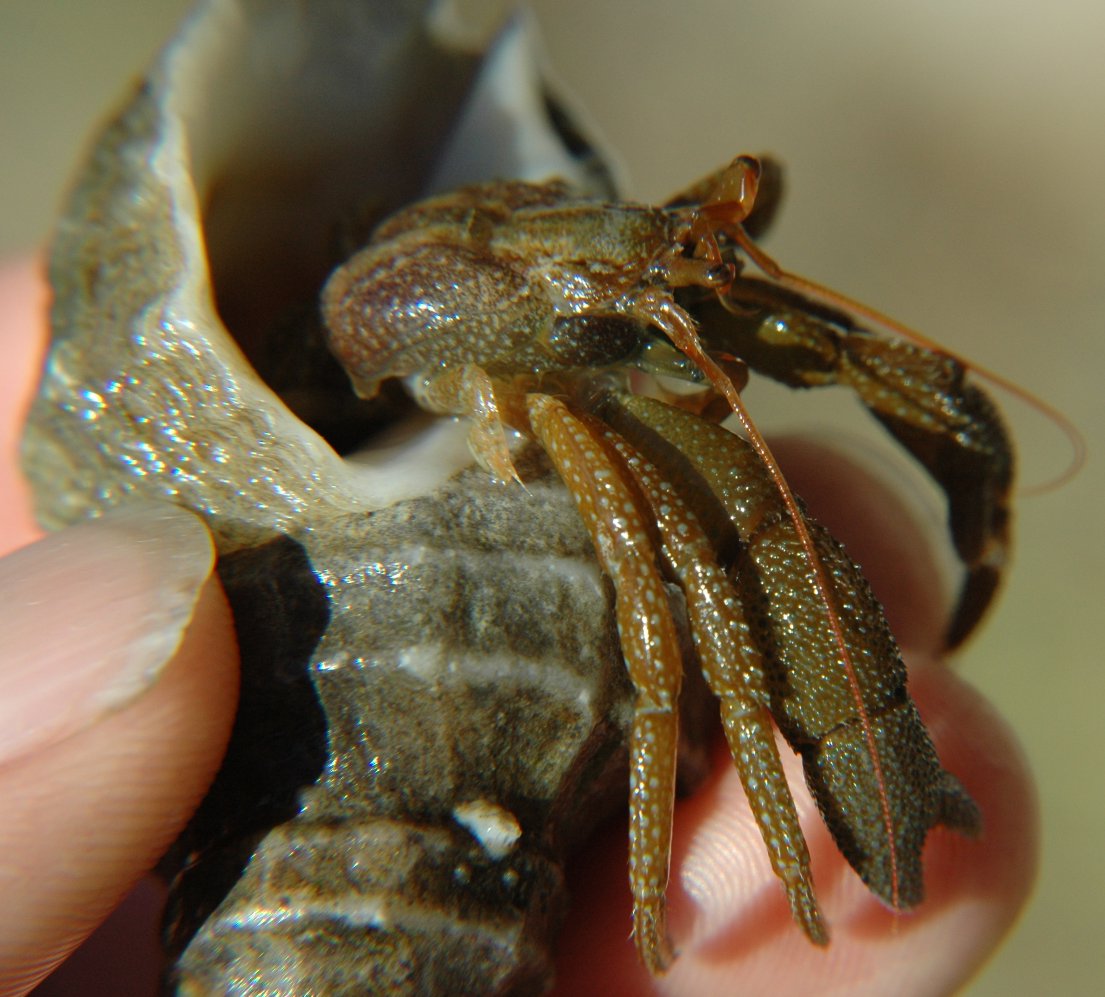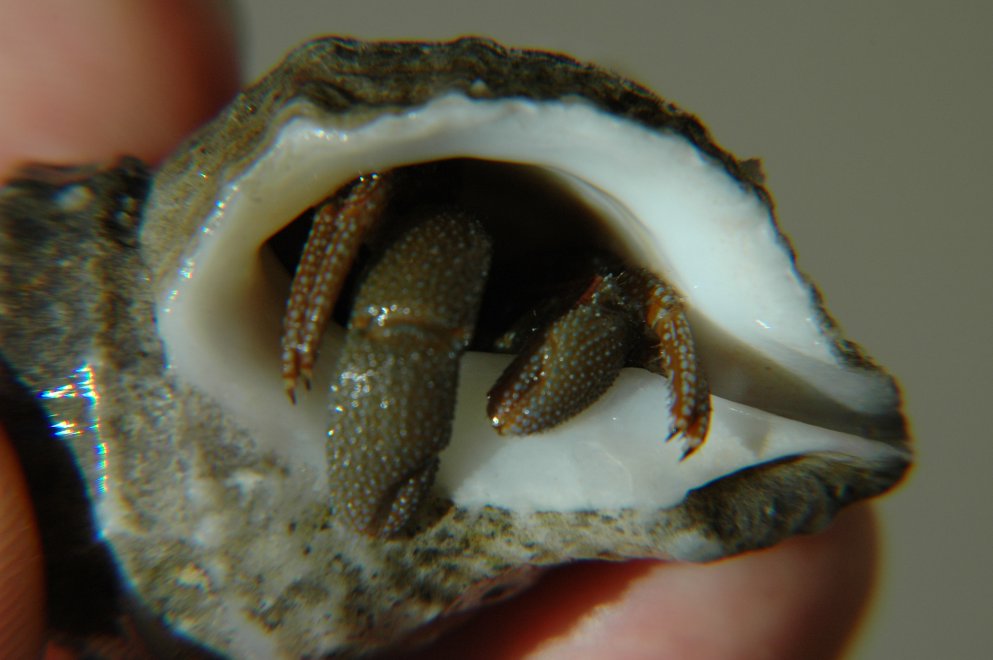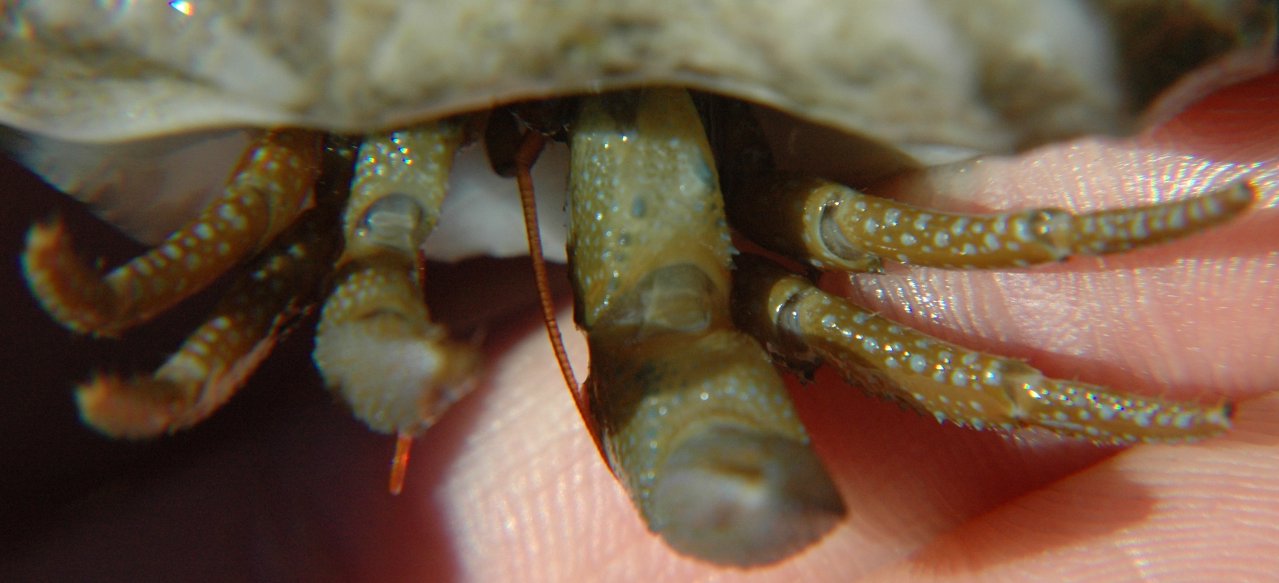Pagurus granosimanus (Stimpson, 1858)Common name(s): Grainyhand hermit crab, Granular hermit crab |
|
| Synonyms: Eupagurus granosimanus |  |
| Phylum Arthropoda
Subphylum Crustacea Class Malacostraca Subclass Eumalacostraca Superorder Eucarida Order Decapoda Suborder Pleocyemata Infraorder Anomura Superfamily Paguroidea Family Paguridae |
|
| Pagurus granosimanus from Sares Head, in a Nucella lamellosa shell. | |
| (Photo by: Dave Cowles July 2005) | |
How to Distinguish from Similar Species: Of the species common in the intertidal, no others have the blue dots all over the legs. P. beringanus has red bands and red dots on the legs. P. hirsutiusculus has no dots and hairy legs. P. hemphilli has dark red legs with yellow spots, with a white dot at the end. P. samuelis is found only on the open coast and has red antennae and a blue band on the dactyls of legs 2 and 3.
Geographical Range: Unalaska, Aleutian Islands, Alaska to Bahia de Todos Santos, Baja California. Less abundant than P. samuelis in California and south.
Depth Range: Low intertidal to 36 m
Habitat: Rocky, cobbles, and among algae.
Biology/Natural History: This species is often found in Tegula funebralis, Searlesia dira or Nucella lamellosa shells. Small individuals live in Littorina shells. It seems to prefer shells large enough that it can completely withdraw inside. It lives lower in the intertidal than does P. hirsutiusculus but higher than P. beringanus. This is said to be the smallest intertidal hermit crab to be found in Puget Sound, but I have not noticed it being particularly small. Predators include the black prickleback, Xiphister atropurpureus. The species is active mainly in the afternoon and night, and sometimes can be found in large aggregations on shallow sand bottoms. They produce 3 broods per year in the Puget Sound area. The females carry their eggs for about 55 days, and the planktonic zoea/megalops stages last about 70 days.
In Puget Sound this hermit is said to change shells more often than does P. hirsutiusculus, and holds onto its shells more tenaceously. It is often able to evict P. hirsutiusculus from its shell and take it over.
| Return to: | |||
| Main Page | Alphabetic Index | Systematic Index | Glossary |
References:
Dichotomous Keys:Coffin, 1952
Flora and Fairbanks, 1966
Hart, 1982
Kozloff 1987, 1996
Smith and Carlton, 1975
Wicksten, 2009
General References:
Brusca
and Brusca, 1978
Jensen,
1995
Johnson
and Snook, 1955
Kozloff,
1993
Morris
et al., 1980
O'Clair
and O'Clair, 1998
Sept,
1999
Scientific
Articles:
Web sites:
General Notes and Observations: Locations, abundances, unusual behaviors:
I find this hermit crab on Sares Head much more often
than I
find P.
hirsutiusculus.

This species often chooses shells large enough to withdraw into
entirely.
Photo by Dave Cowles, July 2005

The carpus of the right cheliped is longer than wide. The
merus
has 2 prominent tubercles on its underside (colored light
blue) Photo
by Dave Cowles, July 2005

Here Pagurus granosimanus is living in a Chlorostoma
funebralis shell.
Photo by Kirt Onthank, 2005
Authors and Editors of Page:
Dave Cowles (2005): Created original page